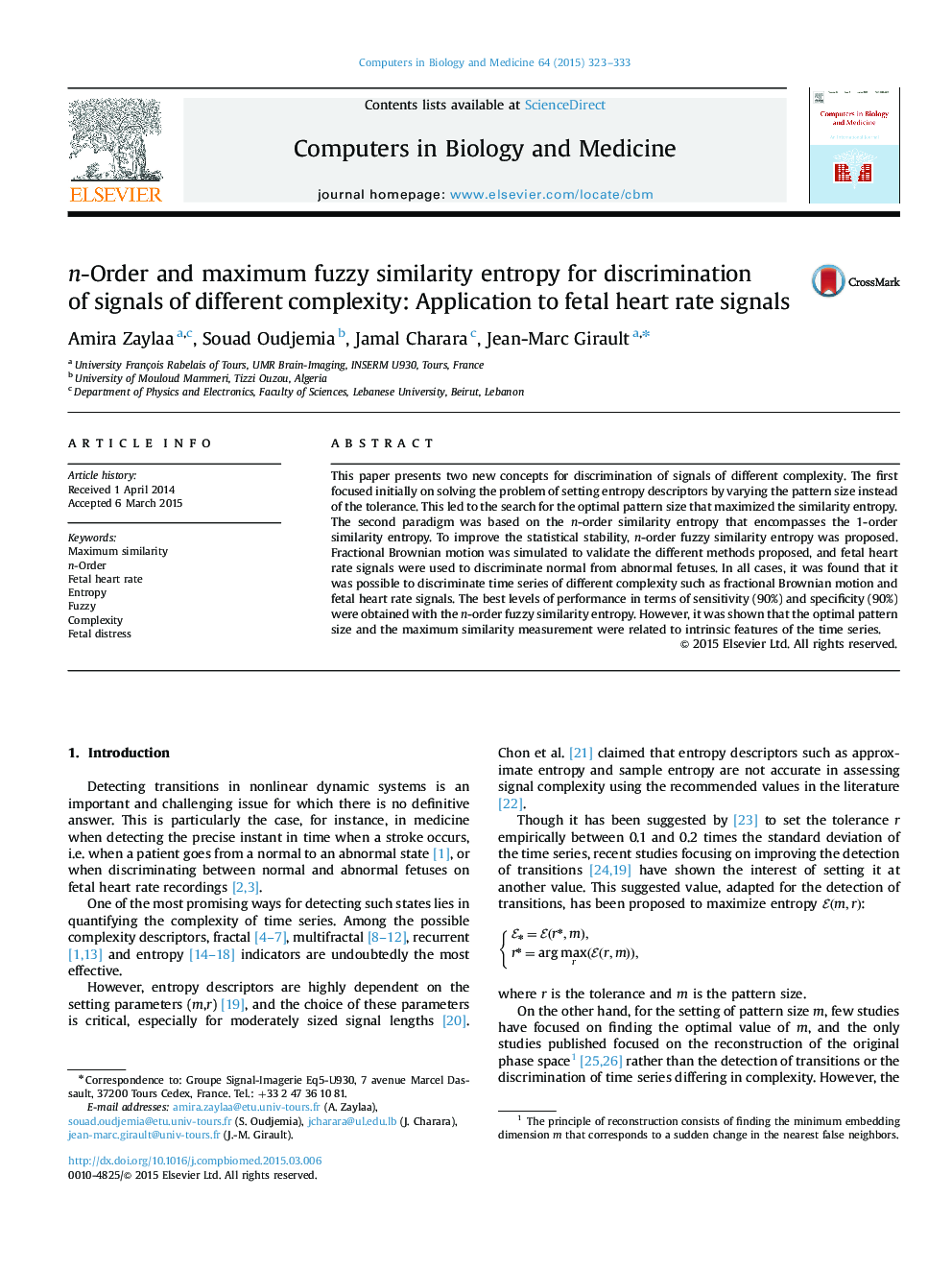| کد مقاله | کد نشریه | سال انتشار | مقاله انگلیسی | نسخه تمام متن |
|---|---|---|---|---|
| 504867 | 864447 | 2015 | 11 صفحه PDF | دانلود رایگان |

• Solving the problem of setting entropy descriptors by varying the pattern size instead of the tolerance.
• Improving the discrimination of signals of different complexity such as fBm and fetal heart rate signal (normal-IUGR).
• Linking intrinsic features of time series with the optimal pattern size that maximizes the similarity entropy.
• Improving the discrimination by developing a new paradigm as the n-order fuzzy similarity entropy.
This paper presents two new concepts for discrimination of signals of different complexity. The first focused initially on solving the problem of setting entropy descriptors by varying the pattern size instead of the tolerance. This led to the search for the optimal pattern size that maximized the similarity entropy. The second paradigm was based on the n-order similarity entropy that encompasses the 1-order similarity entropy. To improve the statistical stability, n-order fuzzy similarity entropy was proposed. Fractional Brownian motion was simulated to validate the different methods proposed, and fetal heart rate signals were used to discriminate normal from abnormal fetuses. In all cases, it was found that it was possible to discriminate time series of different complexity such as fractional Brownian motion and fetal heart rate signals. The best levels of performance in terms of sensitivity (90%) and specificity (90%) were obtained with the n-order fuzzy similarity entropy. However, it was shown that the optimal pattern size and the maximum similarity measurement were related to intrinsic features of the time series.
Journal: Computers in Biology and Medicine - Volume 64, 1 September 2015, Pages 323–333